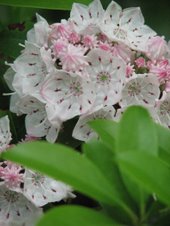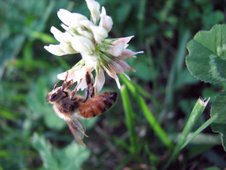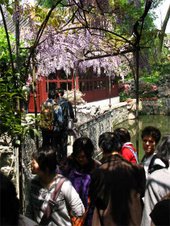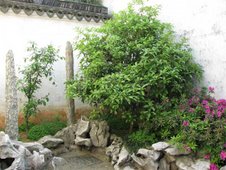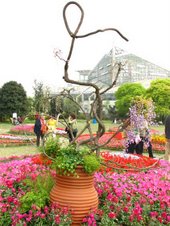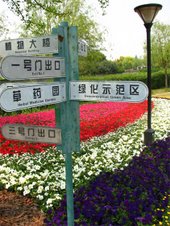December 21st is the Winter Solstice the shortest day and longest night of the year and the official start of winter. With our recent cold temperatures and snow flurries, winter didn’t wait for its official start. With the shorter periods of light plants die or stop producing new growth. Average daily temperature below 43F (6C) will also cause plants to stop growth; so the leaves, stems, and flowers die. However, the roots of trees, shrubs and some plants are storing energy for spring growth. After Dec. 21st we can look forward to days starting to lengthen; and nights shortening.
During freezing weather, water is more important than food to birds and animals. Birds need to drink and bath to survive. If your outdoor water source is frozen; pour in hot water. Or provide a water fountain since running water tends not to freeze.
Chrysanthemums plants can be increased by taking cuttings from shoots found below the soil round the old stems. If you don’t have time to take cuttings, just leave your chrysanthemums in their pots or in the ground. In spring the plants will start growing new shoots for fall blooms.
When the weather isn’t too bitter; build a rock garden, repair garden fences, clean and sharpen garden tools. To build a rock garden on a small slope make sure there is good drainage. Start with a layer of small gravel or grit then add topsoil. The border rocks should be placed so they slope backwards, so that rain drains off. Sandstone will make your soil more acidic; whereas limestone creates an alkaline soil.
After weeks of the Xmas frenzy I am ready to nest in my home and read the garden books I’ve been stockpiling all year, but haven’t taken the time to read. So while your garden is resting; envision your dream garden for 2011.
In “Remarkable Trees of Virginia”, author and lecturer Nancy Ross Hugo, Virginia Tech Department of Forestry extension specialist and Professor Jeff Kirwan and photographer Robert Llewellyn beautifully document the oldest, tallest, most historic and best-loved trees in the Commonwealth. This large coffee table book will help you enjoy your time inside while you peruse magnificent photos and fascinating description of beloved Virginia trees. In fact come spring you might want to plan a visit to some of these fascinating trees.
“The Wise Old Gnome Speaks, How to Really, Really, Really, Care About Your Garden” by James W. Smith is a small paperback bursting with practical info. In the third grade the author was in charge of the class vegetable garden. After managing plant nurseries he became an assistant Professor of Ornamental Horticulture at Cal Poly, the head gardener for several private estates, and a plant breeder.
As James writes “This book will save you time and money…will demystify gardening”, will enable you to understand plants. This is a fun and informative Xmas gift for the experienced and novice gardener.
END Copyright: Louisa Preston 2010
Wednesday, December 15, 2010
Friday, October 1, 2010
Drought & Rain
We can all see that we are in a drought. The wind, bright sun, and lack of rain dry out the plants and trees. Yesterday I spent most of the morning watering. The earth sucks the moisture down like a shower drain. Better to water your plants in early morning or dusk. Use a garden hose or water bucket to water at the base of your plant. A sprinkler will waste your water as the water droplets will be absorbed into the dry air.
Well that was two weeks ago. Now the rain has been falling for 3 days and there are flash flood warnings.
The crape myrtles, butterfly bushes and other flowering plants and shrub were beautiful this summer. As are the butterflies they attract. My vegetable garden has all sizes of caterpillars, which I handpick and squash. Another insect pest is grasshoppers. Put a large jar with a water and white vinegar mixture in your garden. The grasshoppers and crickets will jump in and drown. One person told me he kills his grasshoppers with a bb gun.
Prepare for a winter garden by buying seeds of arugula, broccoli, brussels sprouts, cabbage, cilantro, kale, leek, lettuce, spinach, swiss chard and sage. Also consider planting a cover crop, such as crimson clover, vetch or ryegrass. The cover crop is good for erosion control and nitrogen building. Till under in the spring. As soon as we get rain, plant your veggie and cover crop seeds.
Today I have a “show & tell”. This small plastic bin is a worm bin I made by drilling air holes into a plastic container. The red wiggler worms are my new pets. Every couple of days I check to see if they need more kitchen scraps. They eat vegetables, fruits, pasta or beans. No meat, fish, citrus peels, onions or garlic. My worms seem to prefer ripe cucumbers.
The red wiggler or Eisenia foetida is a more efficient and quicker processer of food waste than earthworms. The worms produce dark compost (vermicompost), which is a rich soil additive which can be added to potting soil, seed beds, and gardens. Or mix with water for a worm casting tea – for your plants; not you to drink.
The worm bin should be kept inside in temperatures between 60 and 80 degrees. Kitchen, garage, basement or mud room will work. Keep away from vibrations such as from a refrigerator or washing machine. The vibrations make them uptight.=
Moist shredded newspaper with a small amount of soil works as their bedding. Also straw, peat moss and/or sawdust can be added to the bedding. If you have bad odors; the bedding is too wet, there is too much food, or not enough air.
My red wiggler worms were given to me at the Hanover Cooperative Extension booth during the Heirloom Harvest Festival in Charlottesville. Several sites on the internet sell red wiggler worms.
Well that was two weeks ago. Now the rain has been falling for 3 days and there are flash flood warnings.
The crape myrtles, butterfly bushes and other flowering plants and shrub were beautiful this summer. As are the butterflies they attract. My vegetable garden has all sizes of caterpillars, which I handpick and squash. Another insect pest is grasshoppers. Put a large jar with a water and white vinegar mixture in your garden. The grasshoppers and crickets will jump in and drown. One person told me he kills his grasshoppers with a bb gun.
Prepare for a winter garden by buying seeds of arugula, broccoli, brussels sprouts, cabbage, cilantro, kale, leek, lettuce, spinach, swiss chard and sage. Also consider planting a cover crop, such as crimson clover, vetch or ryegrass. The cover crop is good for erosion control and nitrogen building. Till under in the spring. As soon as we get rain, plant your veggie and cover crop seeds.
Today I have a “show & tell”. This small plastic bin is a worm bin I made by drilling air holes into a plastic container. The red wiggler worms are my new pets. Every couple of days I check to see if they need more kitchen scraps. They eat vegetables, fruits, pasta or beans. No meat, fish, citrus peels, onions or garlic. My worms seem to prefer ripe cucumbers.
The red wiggler or Eisenia foetida is a more efficient and quicker processer of food waste than earthworms. The worms produce dark compost (vermicompost), which is a rich soil additive which can be added to potting soil, seed beds, and gardens. Or mix with water for a worm casting tea – for your plants; not you to drink.
The worm bin should be kept inside in temperatures between 60 and 80 degrees. Kitchen, garage, basement or mud room will work. Keep away from vibrations such as from a refrigerator or washing machine. The vibrations make them uptight.=
Moist shredded newspaper with a small amount of soil works as their bedding. Also straw, peat moss and/or sawdust can be added to the bedding. If you have bad odors; the bedding is too wet, there is too much food, or not enough air.
My red wiggler worms were given to me at the Hanover Cooperative Extension booth during the Heirloom Harvest Festival in Charlottesville. Several sites on the internet sell red wiggler worms.
Monday, May 24, 2010
"CowPots" & Mulch
This spring I’ve been growing small seedlings by planting seeds in dirt in small containers, which I place in a sunny location in my house. After they have grown two sets of leaves, I transplant them to a larger pot. I’ve found “CowPots” perfect for my seedlings. These pots are made from composted cow manure. When the seedlings are ready for transplanting to your garden, place the “CowPots directly into the soil. Therefore, the roots are not damaged by removing the plant from a pot. The young plant roots easily penetrate the sides and bottom of the pot. As the composted manure biodegrades, the seedling is fertilized from the manure.
“CowPots” come in two different sizes, 4 inch or 2 inch. I bought these at Southern States. Oh and they don’t smell!
Mulch improves the appearance of our gardens. The other reason to mulch is to protect plants, conserve water, suppress weeds, and nourish soil. Mulch is an organic substance which is a by-products of forest harvesting. Best not to use mulch until it has begun to decompose. After I receive wood chips from a cut tree, I wait a year or so before using the pile of chips. As mulch ages, it becomes darker in color.
For acid loving plants, like azaleas and rhododendrons, use a mulch that releases acid, such as pine straw or pine bark. Hardwood mulches tend to become alkaline and are good for most other plants.
Do not use mulch which is made from recycled wood pallets and woody construction debris which has been dyed or stained. The dyes and stains will leach into your soil.
Apply mulch in 3 to 5 inches layer on your garden. Do not place mulch directly to base of plants. Especially, do not place against tree or shrub trunks because it can cause basal rot. Replenish mulch when there‘s one inch or less or it. Usually top off every year.
“CowPots” come in two different sizes, 4 inch or 2 inch. I bought these at Southern States. Oh and they don’t smell!
Mulch improves the appearance of our gardens. The other reason to mulch is to protect plants, conserve water, suppress weeds, and nourish soil. Mulch is an organic substance which is a by-products of forest harvesting. Best not to use mulch until it has begun to decompose. After I receive wood chips from a cut tree, I wait a year or so before using the pile of chips. As mulch ages, it becomes darker in color.
For acid loving plants, like azaleas and rhododendrons, use a mulch that releases acid, such as pine straw or pine bark. Hardwood mulches tend to become alkaline and are good for most other plants.
Do not use mulch which is made from recycled wood pallets and woody construction debris which has been dyed or stained. The dyes and stains will leach into your soil.
Apply mulch in 3 to 5 inches layer on your garden. Do not place mulch directly to base of plants. Especially, do not place against tree or shrub trunks because it can cause basal rot. Replenish mulch when there‘s one inch or less or it. Usually top off every year.
Friday, May 7, 2010
Prevent Slugs from Eating Your Plants
Earth Day has passed. I had planned to write in this blog to celebrate, but I’m fighting auto-immune diseases and some days/weeks just sleep away.
Are slugs eating your plants? An improvement over the dish of beer in your garden is a 16oz plastic container with lid. Cut holds in upper 1/3 side of the container. Bury up to the bottom edges of the holes. This prevents the container from being knocked over. Add beer and place on lid. The lid prevents evaporation and dilution by rain. I've drowned in beer more than 50 slugs last month and my plants thank me.
Are slugs eating your plants? An improvement over the dish of beer in your garden is a 16oz plastic container with lid. Cut holds in upper 1/3 side of the container. Bury up to the bottom edges of the holes. This prevents the container from being knocked over. Add beer and place on lid. The lid prevents evaporation and dilution by rain. I've drowned in beer more than 50 slugs last month and my plants thank me.
Sunday, March 21, 2010
First Day of Spring
The first day of spring arrived yesterday, Saturday, March 20th. The day was sunny with temperatures in mid 70s. The daffodils, crocuses, and forsythia blooms are prettier than ever thanks to the snow’s moisture and minerals.
The average date for the last frost for Richmond is April 27th. About 4 weeks before the last frost, which would be around March 27th, is the time to plant dormant roses and bare-root shrubs. Dogwoods and magnolias should only be planted in the spring.
Perennials such as hostas, liriope, Shasta daisies, and daylilies can be divided before new growth starts. Separate the plants and place back into the soil at the original depth. Water well and mulch. Plant the extras in containers for gifts.
Even with the cool days you can plant petunias, snapdragons, marigolds, nasturtiums, and dianthus.
Fertilize lilies, clematis, lilacs and bearded iris with bone meal or 5-10-5 plus lime. Also fertilize pansies and houseplants. Do not begin fertilizing peonies until after they have been planted for 2 to 3 years. A great all around fertilizer is liquid seaweed.
Vegetables that can be planted before the last frost are lettuce, kale, spinach, cabbage, broccoli and Brussels sprouts. Plant onions, potatoes, peas, radishes, asparagus, and turnips near the end of the month. Seedlings started inside will appreciate fertilizing at half strength every two weeks.
Add mulch to asparagus, artichokes, bramble fruits and fruit trees. March is too early to remove mulch from your other plants. The ides of March can bring surprises such as last year when we had an 80 degrees week followed by two frosts.
March is a good time to repot houseplants into larger containers. Leggy plants should be cut back. Root your cuttings for our plant exchange in May. The secret to rooting coleus and wax begonias is to cut the top 6 inches of a leafy stem below a leaf node. Then remove the leaves from the bottom 3 inches and place the cutting in water adding a few drops of bleach. Place in a partially sunny window. Place in soil after roots have developed.
One way to celebrate spring is to attend the free Arbor Day Workshops and Exhibits on April 3rd at Byrd Park. Stay Co2ol with Trees, is on a Saturday from 10 a.m. to 2 p.m. at the Carillon in Richmond’s Byrd Park. During the festivities, Richmond,VA will receive Tree City USA recognition from the Arbor Day Foundation for the 19th straight year.
There will be a free tree giveaways, workshops, kid activities and music. Attendees will be able to purchase compost bins at a discount through the Clean City Commission.
The average date for the last frost for Richmond is April 27th. About 4 weeks before the last frost, which would be around March 27th, is the time to plant dormant roses and bare-root shrubs. Dogwoods and magnolias should only be planted in the spring.
Perennials such as hostas, liriope, Shasta daisies, and daylilies can be divided before new growth starts. Separate the plants and place back into the soil at the original depth. Water well and mulch. Plant the extras in containers for gifts.
Even with the cool days you can plant petunias, snapdragons, marigolds, nasturtiums, and dianthus.
Fertilize lilies, clematis, lilacs and bearded iris with bone meal or 5-10-5 plus lime. Also fertilize pansies and houseplants. Do not begin fertilizing peonies until after they have been planted for 2 to 3 years. A great all around fertilizer is liquid seaweed.
Vegetables that can be planted before the last frost are lettuce, kale, spinach, cabbage, broccoli and Brussels sprouts. Plant onions, potatoes, peas, radishes, asparagus, and turnips near the end of the month. Seedlings started inside will appreciate fertilizing at half strength every two weeks.
Add mulch to asparagus, artichokes, bramble fruits and fruit trees. March is too early to remove mulch from your other plants. The ides of March can bring surprises such as last year when we had an 80 degrees week followed by two frosts.
March is a good time to repot houseplants into larger containers. Leggy plants should be cut back. Root your cuttings for our plant exchange in May. The secret to rooting coleus and wax begonias is to cut the top 6 inches of a leafy stem below a leaf node. Then remove the leaves from the bottom 3 inches and place the cutting in water adding a few drops of bleach. Place in a partially sunny window. Place in soil after roots have developed.
One way to celebrate spring is to attend the free Arbor Day Workshops and Exhibits on April 3rd at Byrd Park. Stay Co2ol with Trees, is on a Saturday from 10 a.m. to 2 p.m. at the Carillon in Richmond’s Byrd Park. During the festivities, Richmond,VA will receive Tree City USA recognition from the Arbor Day Foundation for the 19th straight year.
There will be a free tree giveaways, workshops, kid activities and music. Attendees will be able to purchase compost bins at a discount through the Clean City Commission.
Monday, March 1, 2010
Orchids, Virginia Historic Garden tour & Amaryllis
Did you miss last weekend’s Orchid Show at Strange’s (www.strangesgardencenter.com) in Richmond, VA? The show was presented by The Virginia Orchid Society (vaorchidsociety.org) with orchid displays and vendors. Free lectures both days and free repotting.
Orchids provide lovely indoor bloom during the barren winter months. To find an orchid show in your area visit the American Orchid Society (http://www.aos.org/).
By April the snow will have disappeared for the 77th anniversary of Historic Garden Week in Virginia (www.vagardenweek.org & www.GCVirginia.org.) which is April 17th thro 25th. This is when Richmond and the surrounding counties are ablaze with blooming azaleas, lilacs, cherry trees, daffodils and tulips.
Free guidebooks are available at certain garden centers. Tickets may be purchased in advanced or at the houses or gardens during the day of the tour. Expect to wait in long lines to enter the historic private mansions and gardens.
Call the Virginia Tourism Corporation at 1 800-545-5500 for travel accommodations info, a free travel guide, and a state highway map.
Hope this is the end of our snow. Last year at this time the crocuses and daffodils were blooming. Now my daffodils are staying close to the ground and the buds are green.
I decided to google for info on the continuing care of my Amaryllis (Hippeastrum). I was amazed to find more than 250 sites. One site amaryllis.com only sells Amaryllis bulbs. For “after blooming care” cut off only the dead flowers. The flowering stem should not be cut until it starts sagging. After our last frost the pot can be placed outside in full sun. To provide food for the bulb you should continue to water and fertilize all summer.
Orchids provide lovely indoor bloom during the barren winter months. To find an orchid show in your area visit the American Orchid Society (http://www.aos.org/).
By April the snow will have disappeared for the 77th anniversary of Historic Garden Week in Virginia (www.vagardenweek.org & www.GCVirginia.org.) which is April 17th thro 25th. This is when Richmond and the surrounding counties are ablaze with blooming azaleas, lilacs, cherry trees, daffodils and tulips.
Free guidebooks are available at certain garden centers. Tickets may be purchased in advanced or at the houses or gardens during the day of the tour. Expect to wait in long lines to enter the historic private mansions and gardens.
Call the Virginia Tourism Corporation at 1 800-545-5500 for travel accommodations info, a free travel guide, and a state highway map.
Hope this is the end of our snow. Last year at this time the crocuses and daffodils were blooming. Now my daffodils are staying close to the ground and the buds are green.
I decided to google for info on the continuing care of my Amaryllis (Hippeastrum). I was amazed to find more than 250 sites. One site amaryllis.com only sells Amaryllis bulbs. For “after blooming care” cut off only the dead flowers. The flowering stem should not be cut until it starts sagging. After our last frost the pot can be placed outside in full sun. To provide food for the bulb you should continue to water and fertilize all summer.
Saturday, January 23, 2010
Finally we have a break in the frigid weather and can work in our gardens. Prune the seed capsules off the tips of your crepe myrtles to give larger bloom clusters this summer. Prune the dead blooms from Rose of Sharon. Prune butterfly bush down to about a foot from the ground. Even in the winter weed.
Clean your fireplaces and place the wood ashes around lilacs, roses, peonies, clematis, daffodils and vegetable garden. The ashes add both lime and potash to the soil. Do not put the ashes around your acid-loving plants.
The holidays are over, but don’t throw out your forced bulb flowers with the Christmas tree. Cut off the dead flower heads and place plant in a sunny indoor location. Every second watering add a half dose of fertilizer to the water. In the spring place your potted amaryllis outside and plant the other bulbs in your garden.
Poinsettia plants can also be reused each year. Keep the plant in a sunny location where the night time temperature is no colder than 60 degrees. The soil should be kept damp and fertilized lightly when new growth appears. When the temperature is warm enough, cut back the plant and place outside. In early October bring the plant indoors for 12 hours of darkness a day and in December the bracts will turn to color for Holidays.
It is not too soon to start forcing blooms from flowering shrubs and trees. Forsythia is especially easy. Also try crabapple, peach, plum, pussy willow, quince, winter jasmine and witch hazel.
Start planning your spring vegetable garden. Sow seeds of cool season vegetables, such as arugula, in indoor pots or trays. Also start seeds of lavender, chives, dill, rosemary, thyme and parsley. Seeds of peas (soak over night), lettuce, spinach and chard can be planted in your garden if protected with a cover of black fabric.
Also indoors start germinating seeds of Petunia, Portulaca, Salvia, Snapdragon and Verbena. All take 8 to 10 weeks before their seedlings are ready to be planted in your garden.=
Attend a flower show. The Maymont Flower & Garden Show is Feb. 18th through Feb. 21st at the Greater Richmond Convention Center. For more info 800-332-3976 or http://www.macevents.com/
Feb. 28th through March 7th is The 2010 Philadelphia Flower Show “Passport to the World. Displays will represent India, Brazil, the Netherlands, South Africa, New Zealand and Singapore. For more info http://www.theflowershow.com/
Study your garden catalogues and plan for the arriving warm weather.
Clean your fireplaces and place the wood ashes around lilacs, roses, peonies, clematis, daffodils and vegetable garden. The ashes add both lime and potash to the soil. Do not put the ashes around your acid-loving plants.
The holidays are over, but don’t throw out your forced bulb flowers with the Christmas tree. Cut off the dead flower heads and place plant in a sunny indoor location. Every second watering add a half dose of fertilizer to the water. In the spring place your potted amaryllis outside and plant the other bulbs in your garden.
Poinsettia plants can also be reused each year. Keep the plant in a sunny location where the night time temperature is no colder than 60 degrees. The soil should be kept damp and fertilized lightly when new growth appears. When the temperature is warm enough, cut back the plant and place outside. In early October bring the plant indoors for 12 hours of darkness a day and in December the bracts will turn to color for Holidays.
It is not too soon to start forcing blooms from flowering shrubs and trees. Forsythia is especially easy. Also try crabapple, peach, plum, pussy willow, quince, winter jasmine and witch hazel.
Start planning your spring vegetable garden. Sow seeds of cool season vegetables, such as arugula, in indoor pots or trays. Also start seeds of lavender, chives, dill, rosemary, thyme and parsley. Seeds of peas (soak over night), lettuce, spinach and chard can be planted in your garden if protected with a cover of black fabric.
Also indoors start germinating seeds of Petunia, Portulaca, Salvia, Snapdragon and Verbena. All take 8 to 10 weeks before their seedlings are ready to be planted in your garden.=
Attend a flower show. The Maymont Flower & Garden Show is Feb. 18th through Feb. 21st at the Greater Richmond Convention Center. For more info 800-332-3976 or http://www.macevents.com/
Feb. 28th through March 7th is The 2010 Philadelphia Flower Show “Passport to the World. Displays will represent India, Brazil, the Netherlands, South Africa, New Zealand and Singapore. For more info http://www.theflowershow.com/
Study your garden catalogues and plan for the arriving warm weather.
Subscribe to:
Posts (Atom)






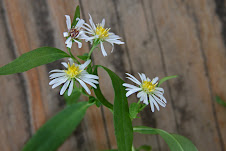












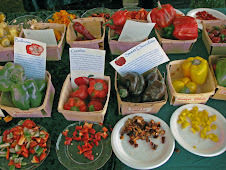LP_gardening_2666.jpg)
LP_gardening_2668.jpg)

LP_garden_2819.jpg)

LP_flower_0563.jpg)
LP_flower_0577.jpg)
LP_flower_0545.jpg)
LP_flower_0555.jpg)
LP_flower_0539.jpg)
LP_dog_0470.jpg)
LP_snow_0467.jpg)
LP_dog_0349.jpg)
LP_tree_8153.jpg)
LP_5028.jpg)
LP_flowers_3940.jpg)

LP-grass_0889.jpg)
LP_redfox_1651.jpg)
LP_squirrel_6978.jpg)
LP_flower_6936.jpg)
LP_squirrel_6864.jpg)
LP-deer_4773.jpg)
LP_4521.jpg)
LP_1251.jpg)
LP_4585.jpg)
LP_3784.jpg)
LP_3759.jpg)
LP_3811.jpg)
LP_3816.jpg)
LP_3847.jpg)
LP_0870.jpg)
LP_4183.jpg)
LP_0891.jpg)
LP_3175.jpg)
LP_3577.jpg)

LP_3068.jpg)
LP_3058.jpg)
LP_3562.jpg)
LP_0118.jpg)
LP_3407.jpg)
LP_3150.jpg)
LP_3011+(2).jpg)
LP_3020.jpg)
LP_2830.jpg)
LP_2782.jpg)
LP_2828.jpg)
LP_1746.jpg)
LP_2648.jpg)
LP_2666.jpg)
LP_2668.jpg)
LP_2493.jpg)
LP_2611crop.jpg)
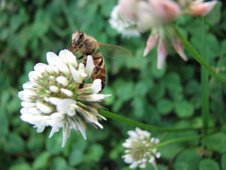
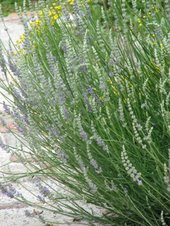
LP_2588.jpg)

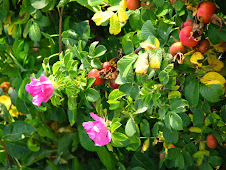
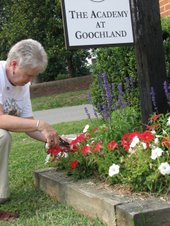


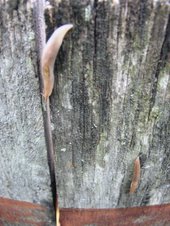
LP_2126.jpg)
LP_2122.jpg)
